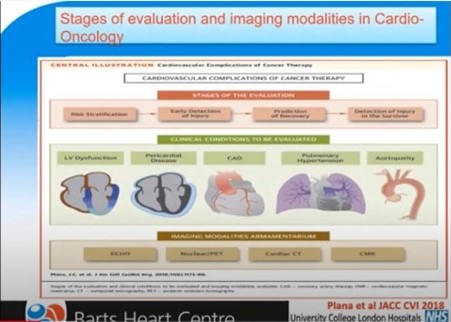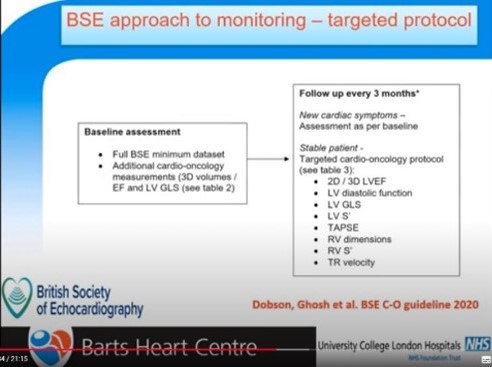
Today’s cancer patient can often be tomorrow’s cardiac patient, said Dr Arjun Ghosh, Consultant cardiologist at Bart’s Heart Centre and University College London Hospital.
With increasing numbers of cancer survivors, cardio-oncology, is becoming ever more important. Any part of the heart can be affected by chemotherapy, radiotherapy and even the newer, targeted oncology treatments, said Dr Ghosh, explaining that the bulk of his caseload relates to the cardiotoxicity of oncology treatments.
Multi-modal imaging
The aim of cardio-oncology, Dr Ghosh explained, is to get the patient through their cancer treatment and then monitor them after it has finished. Imaging plays a vital role in this.
Echocardiography, cardiac MRI (CMRI), nuclear imaging, and coronary CT are all used, and have different advantages and drawbacks. “Echocardiography is widely available, it's portable, you can assess function and anatomy, but the drawbacks include reproducibility. In terms of cardiac MRI, is, it is very reproducible, and can also look at issues such as coronary artery disease, however, it's not as widely available, and there are cost implications.”
The right choice of modality might depend on the condition or stage of the patient journey (see fig. 1), or on the type of cardiotoxicity being interrogated. “For example, if we wish to look at information regarding myocarditis, cardiac MRI and PET imaging would be very helpful; for valve disease echocardiography is, of course, the most useful,” said Dr Ghosh.
 |
| Figure 1: Stages of evaluation and imaging modalities in cardio-oncology |
Type of cancer treatment may also influence the decision, with the choice of imaging modality dependent upon a treatment’s characteristic side effect profile. “Echocardiography is overall the key first-line investigational modality, and the other modalities can give additional information in certain situations.”
Imaging through the patient journey
The British Society of Echocardiography (BSEcho) recommend ejection fraction (EF) and global longitudinal strain (GLS) assessment before the potential initiation of a cardiotoxic treatment. A low normal left ventricle (LV) EF at baseline carries increased risk of cardiac events with anthracyclines and breast cancer.
There are conflicting opinions on what constitutes LV systolic dysfunction as a result of cancer treatment, but Dr Ghosh pointed to the BSEcho guidelines which he co-authored. They say that a >10% fall in LVEF to a value of <50% is defined as cardiotoxicity.
While treatment is ongoing, imaging is used to monitor changes in cardiac function, and to investigate any new cardiac symptoms.
During treatment
Dr Ghosh said there are multiple different guidelines and approaches to echo monitoring during treatment, but again referred to the BSEcho advice currently in press (see fig 2). “What we've suggested is a full baseline assessment with cardiology measurements including 3D volumes and GLS, and then every three months for a targeted cardiology protocol,” he said.
 |
| Figure 2: BSE approach to monitoring |
After treatment
“Cardiac events can take place in patients once they have been cured, and these can be different depending upon whether the patients have been treated in childhood or adulthood, and whether they receive chemotherapy, radiotherapy, or both,” said Dr Ghosh.
The main issues in the late effects setting are cardiac function, coronary artery disease, valve disease and pericardial disease.
Again, there is no consensus on late effects monitoring, he said, adding that the BSEcho guidelines recommend a scan six to 12 months after cardiotoxic therapy. “We feel that decisions regarding long-term surveillance should take into consideration a patient's total anthracycline dose, exposure to other potential cardiotoxic treatments, including radiotherapy, their underlying cardiovascular comorbidities, and cardiotoxicity during, and at the end, of treatment.”
He concluded: “There are many ongoing studies and collaborations in this rapidly developing field, so do watch this space.”
BSEcho 2020 presentations are available on our website for members of the Society.
View the presentations